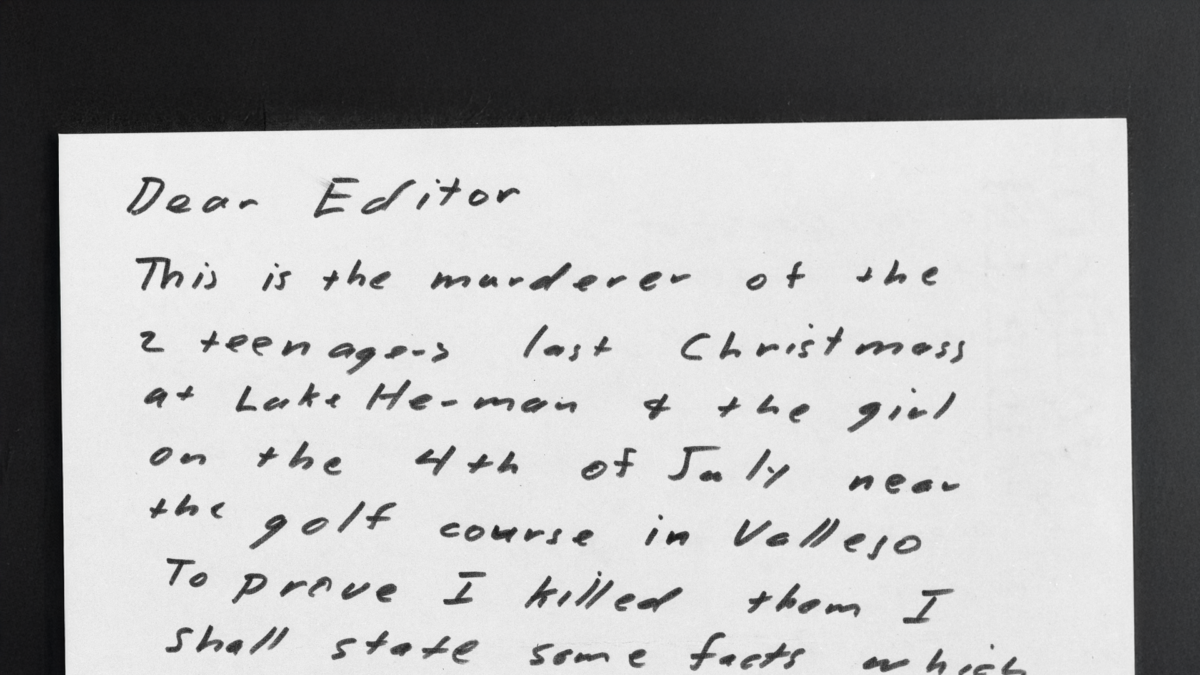The following analysis includes five individuals, some of higher education, some British authors, and some publicly accused Zodiac suspects, in an effort to determine which writer or writer’s background most closely aligns with the grammatical features found in the Zodiac letters.
The Zodiac Suspect Corpus
This corpus includes known documents from three Zodiac suspects and two British authors compiled for a linguistic comparison. The two British authors have been anonymized and labeled as British Author 1 (BA1) and British Author 2 (BA2). Bold text in the tables indicates the closest stylistic match to the Zodiac letters; regular weight indicates the second closest.
- Ted Kaczynski – Born and raised in the Chicago area, Kaczynski moved to California to teach at Berkeley after earning a Ph.D. in mathematics from the University of Michigan. His known documents total 71,455 words, drawn from personal correspondence with his brother, David Kaczynski.
- Arthur Leigh Allen – Born in Hawaii and raised in Vallejo, California, Allen served in the navy before obtaining a bachelor’s degree at California Polytechnic State University and worked as an elementary school teacher. His available writings comprise 4,516 words, including personal and limited professional correspondence.
- British Author 1 – Born and raised in London, this individual earned a Ph.D. from the University of London, later taught in Malaysia, and subsequently earned a second Ph.D. from the University of Cambridge. His corpus includes 20,205 words of professional communications.
- British Author 2 – Also born and raised in London, this author received a Ph.D. from the University of Cambridge and spent most of his life in England, with a few years residing in China. His collected writings include 18,929 words of personal love letters.
- Richard Gaikowski – Born in Watertown, South Dakota, Gaikowski attended Northern State College (now Northern State University) in Aberdeen, South Dakota, before being drafted. Throughout his career he worked as an editor, journalist, and filmmaker. His known writings consist of 16,544 words, primarily from his newspaper column in the Martinez Gazette.
The Zodiac Docs
The Zodiac killer documents included in this study contain the following letters sent from July 31, 1969 – March 31, 1971 including the plaintext from the 408 and 340 ciphers. A Q to Q analysis was performed and each letter and each fit the criteria of a minimal use of contractions, similar ideas, and the author claiming to be the Zodiac. The portion of the letter in which the Zodiac rehearsed the song, I’ve Got a Little List from The Mikado was excluded since it was not the killer’s own words. The only Zodiac communication that possessed a high contraction rate of 50% was the Dripping-Pen Card. The python script only picked up one contracted term and one non-contracted term, however, the letter was so short and the contraction was consistent with a good majority of the others, being that it was a negative (i.e. ‘won’t’) and the other parameters considered were met. This letter also contained the 340 cipher.
Times-Herald Letter | July 31, 1969
Chronicle Letter | July 31, 1969
Examiner Letter | July 31, 1969
408 Cipher | July 31, 1969
Debut of the Zodiac Letter | August 4, 1969
Paul Stine Letter | Oct. 13, 1969
Dripping-Pen Card | Nov. 8, 1969
340 Cipher | Nov. 8, 1969
Bus-Bomb Letter | Nov. 9, 1969
Melvin Belli Letter | Dec. 20, 1969
‘My name is’ Letter | April 20, 1970
Dragon Card | April 28, 1970
Button Letter | June 26, 1970
Kathleen Johns Letter | July 24, 1970
Little List Letter | July 26, 1970
Halloween Card | Oct. 27, 1970
Los Angeles Times Letter | March 13, 1971
Contractions
A contraction is the shortening of one or more words to form a briefer term, often marked with an apostrophe (e.g., do not → don’t) but sometimes not (e.g., kind of → kinda). Our contraction list was modified from Wikipedia and some abnormal contractions removed (e.g., arencha, couldn’t’ve, mayn’t, etc.) Additionally, the punctuation was stripped for plaintext analysis so contractions that would easily be confused with other words were removed from the list (e.g., ‘we’re’ was removed to avoid being confused with ‘were’).
A python script was used to count the contracted and non-contracted terms from a text file and calculate the percentage of times the author chose to contract their words.
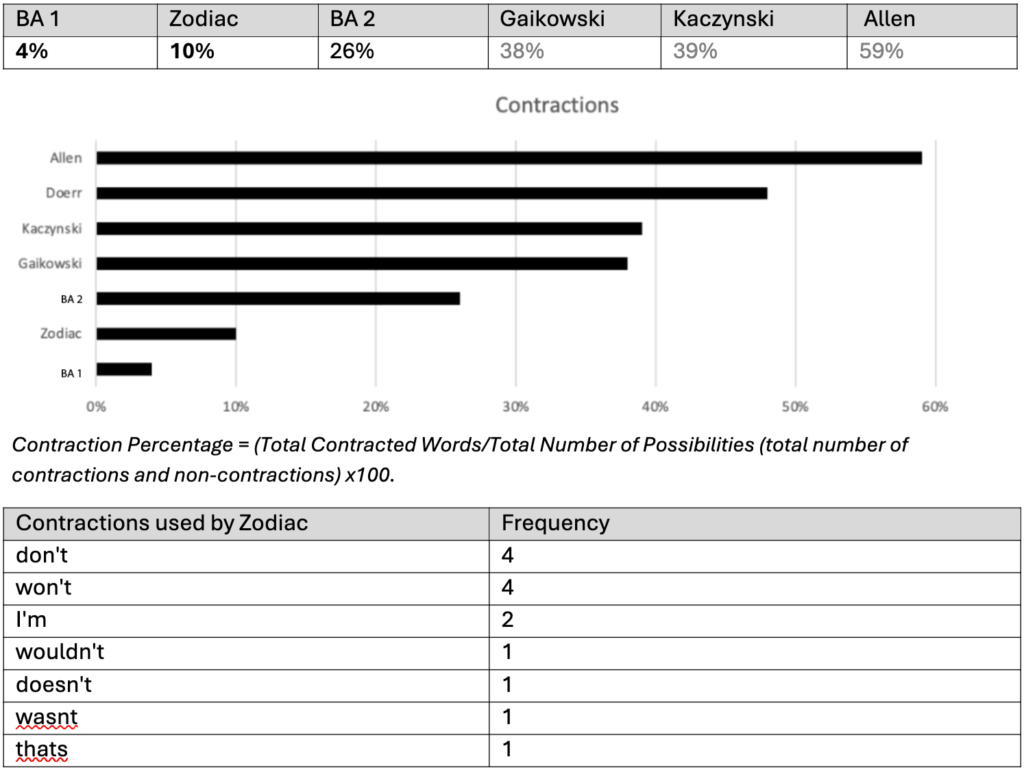
Omissible ‘in’ preceding a gerund phrase
Appearing in the Zodiac’s writing, which is generally more common in formal writing, is the frequent use of the unnecessary preposition “in” before a gerund phrase (verbs ending in –ing that function as nouns).
To find these, we used a python script to pick up all occurrences of ‘in’ followed by gerund phrases and manually removed the ones in which the ‘in’ was required for the sentence to make sense (e.g., ‘I am interested in putting’ requires the ‘in’, it would not make sense as ‘I am interested putting’).

Gerund phrases preceded by possessive determiners
Gerund phrases (verbs ending in –ing that function as nouns) preceded by possessive determiners (e.g. my, your, his, her, their, etc.) appear frequently throughout the questioned documents.
These examples were found using a python script that pulls all gerund phrases and checks them for ones preceded with possessive determiners. The results were manually checked for accuracy.
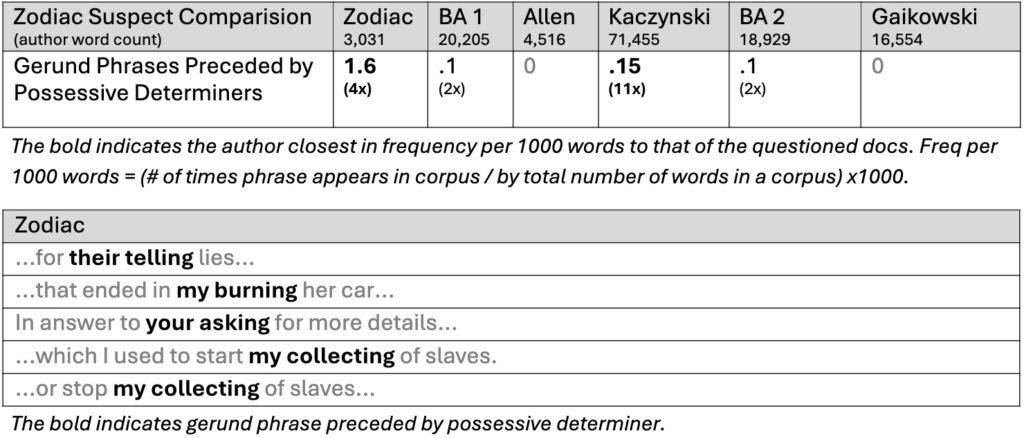
‘As to’, ‘so as to’, & ‘so as not to’
The phrases ‘as to‘, ‘so as to‘, and ‘so as not to‘ are more commonly found in formal writing.
A python script was utilized to find all instances of these phrases.

Summarized Suspect Comparison
British Author 1 shares the highest degree of similarity to the Zodiac letters based on the frequency of these stylistic markers per 1,000 words. BA1’s known documents consist of professional communications, and the author grew up in London and held two PhDs. The second closest match was Ted Kaczynski, who held a PhD in mathematics. Despite being primarily personal correspondence, his writing was still reflective of his higher education. The third most similar was British Author 2, who also held a PhD, with a writing sample composed of personal love letters.

According to this data set, the linguistic evidence suggests that the author of the Zodiac letters possessed a high level of education, as the top three closest matches all held at least one PhD. Additionally, there is a strong likelihood that the author was British, given that British Author 1 demonstrated the highest degree of linguistic similarity in 3 out of 4 cases.
Larger Corpus Analysis
A quick search in the Corpus of Contemporary American English (COCA) with one billion words and British National Corpus (BNC) of one hundred million words further support the claim of a British author.
‘In trying’ appears 4,591 times in the COCA and 549 in the BNC which means it occurs 1.2 times more frequently in British English than American English, strongly suggesting a British preference for this construction.
The contraction ‘don’t’ appears 1,871,806 times in the COCA and 92,334 times in the BNC while ‘do not’ appears 204,594 in the COCA and 20,997 in the BNC. In British English ‘do not’ is contracted 81.5% of the time compared to American English who contracted ‘do not’ 90% of the time, demonstrating Zodiac’s low contraction rate aligns more closely with British authorship.
The possessive gerund, ‘your asking’ is rare in both corpora, but appears twice as often in American English, appearing 90 times in the COCA and 4 times in the BNC. This is consistent with the data above, which shows that Ted Kaczynski, an American author, demonstrates this feature most frequently. However, Zodiac uses this feature in 10 times more often than any of our authors.
‘As to’ appears 59,666 in the COCA and 11,515 in the BNC making it twice as frequent in British English. This is another subtle but significant preference in the Zodiac letters.
Additional Britishisms
We used Google Ngrams to compare words and phrases (n-grams) used by the Zodiac in British English vs. American English. Google Ngrams is an easy to use, powerful tool for linguistic analysis (Juola, 2018) that can be used to analyze changing cultural linguistic trends (Michel et al., 2011).
We recorded the ratio of British English divided by American English for the year 1969 for each n-gram we analyzed. The resulting ratio (column ‘GB/US’ in following table) reflects how ‘British’ a particular n-gram is, with GB/US values higher than 1 being more common in British English. A GB/US value of 2 is twice as common in British English. The higher the ratio, the more common the n-gram is in British English compared to American English.
The top six most British words/phrases that we recognized in the Zodiac letters ranged from 2.52–4.96 times more common in British English (table below). The most British phrase we found was ‘Happy Christmas’, which is 4.96 times more common in British English. The Zodiac technically used ‘Happy Christmass’, but no instances of this bigram were found in Google N-grams.
It could be speculated that the Zodiac intentionally used British-sounding words to throw off investigators. We argue that the second most British phrase we found, ‘car drivers’, strongly suggests that obfuscation is not the case. This bigram is 3.86 times as common in British English and was used by the Zodiac to describe police officers in their vehicles after the murder of Paul Stine in San Francisco. Importantly, ‘car drivers’ is a subtle phrase that is unlikely to have been used as intentional misdirection.
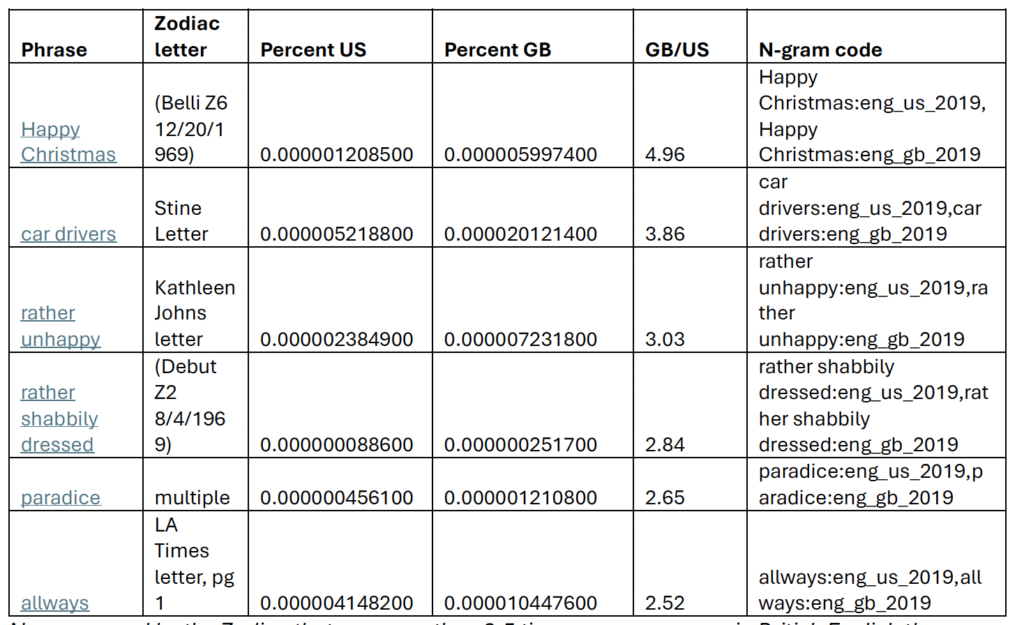
Another potentially British phrase used in the Zodiac communications is ‘fiddle and fart’, as in his letter sent to the Los Angeles Times on March 13, 1971, “Because the longer they fiddle & fart around, the more slaves I will collect for my after life.”
Neither ‘fiddle and fart’ and ‘fiddle fart’ do not appear in the British National Corpus, the Corpus of Contemporary American English, or Google N-grams. A search using newspapers.com shows that ‘fiddle-fart’ and ‘fiddle-farting’ has appeared numerous times in North American newspapers, but only one instance of ‘fiddle and fart’ was detected, in Nanaimo Daily News from British Columbia, Canada, on August 23, 1984.
‘Fiddle and fart’ was detected twice in British newspapers on the newspapers.com search. One instance was in London’s Daily Telegraph on May 21, 1994, in an interview with John Emburey, an English cricket player. The phrase was also published on June 08, 1991, in the Sports Argus, published in Birmingham, England. This article features a quote including “fiddle and fart” by Ron Atkinson, a former English football (soccer) player.
Additional Britishisms and the comparison between British English (red) and American English (blue) listed below.
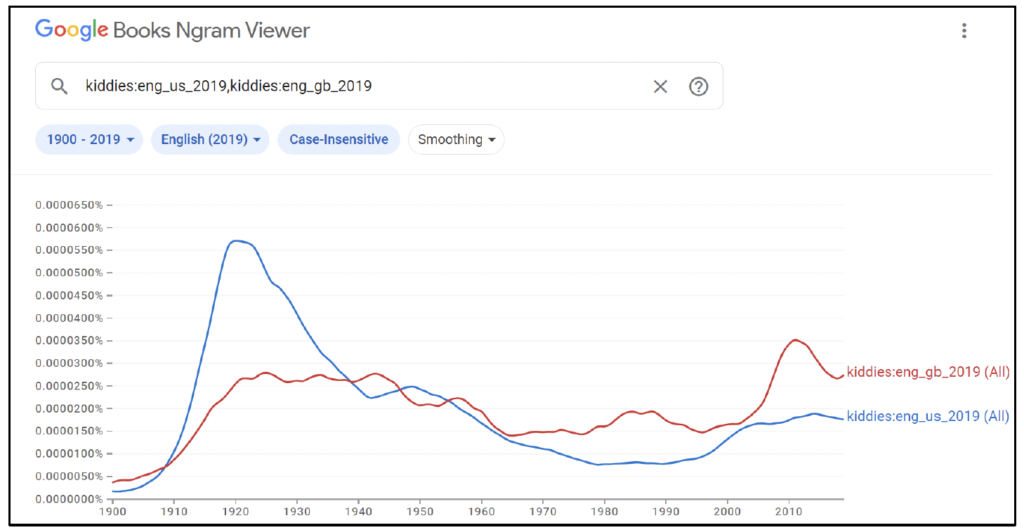
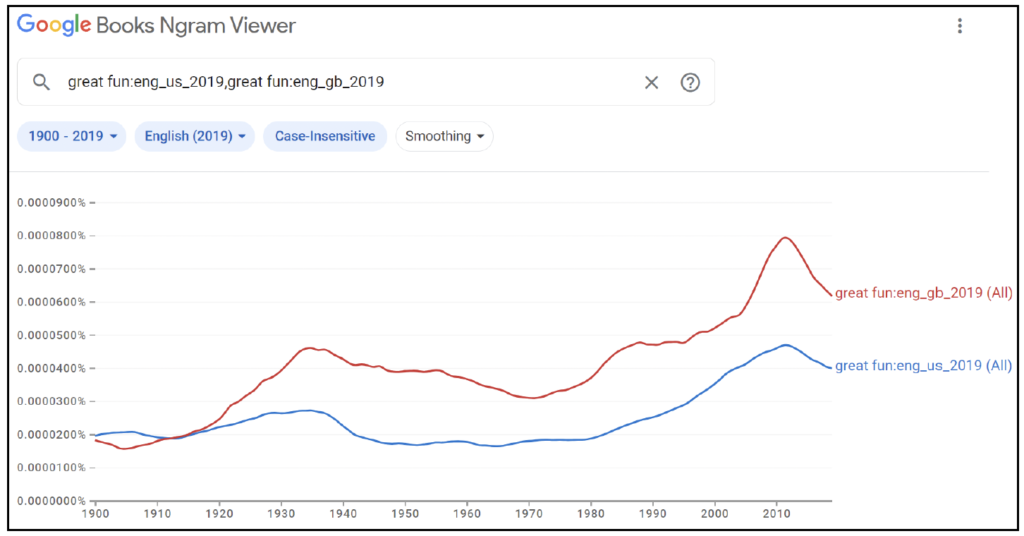
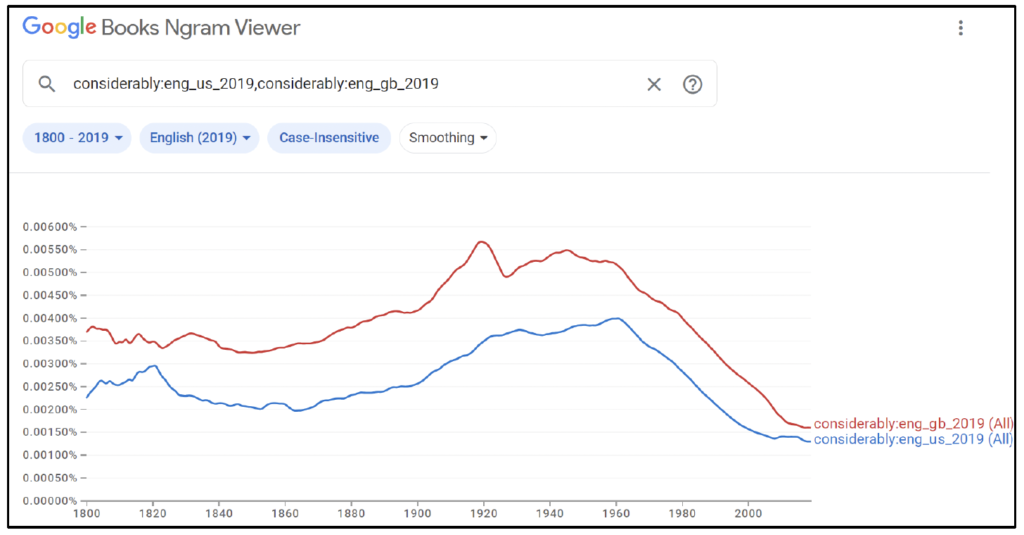
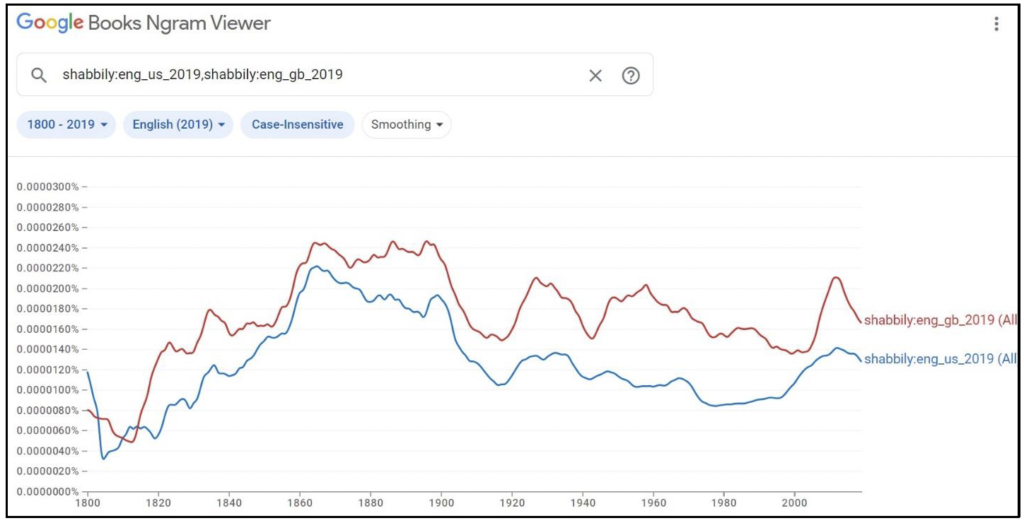
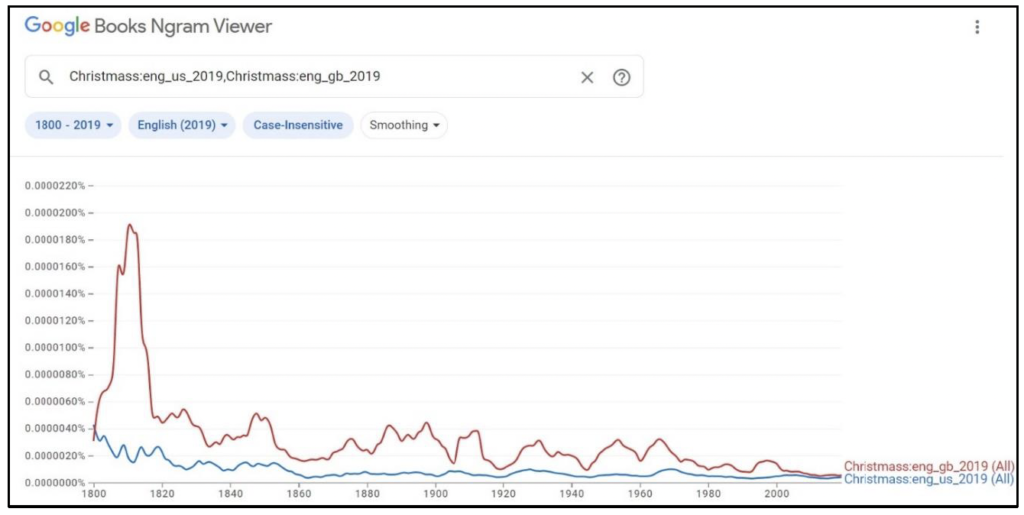
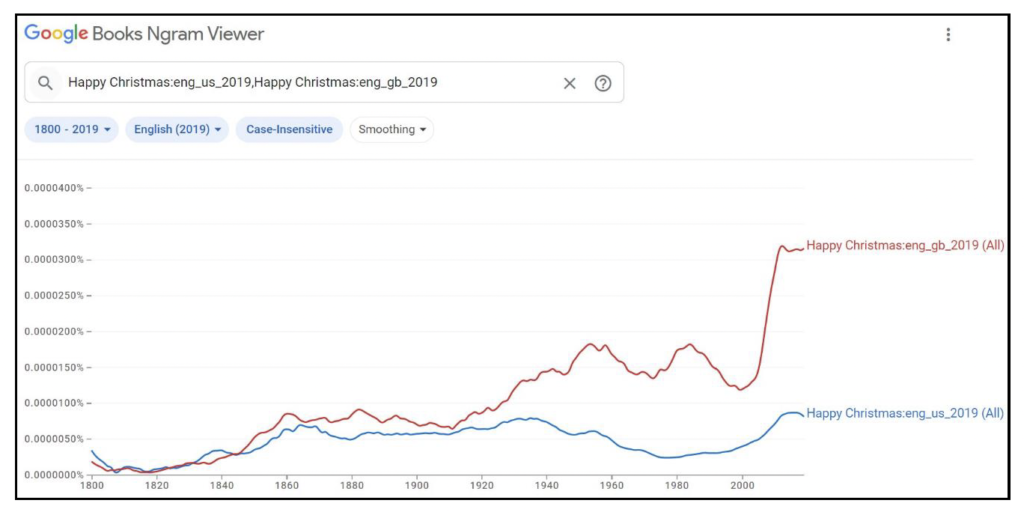
The Rather Ratio
One additional stylistic choice of the Zodiac Killer was the frequent use of ‘rather’ as a degree adverb, which is much more common of British English speakers but also present in formal speak. Two additional British Authors were added to this analysis. British Author 3’s corpus consists of scholarly journal articles while British Author 4 is a science fiction author’s novels.
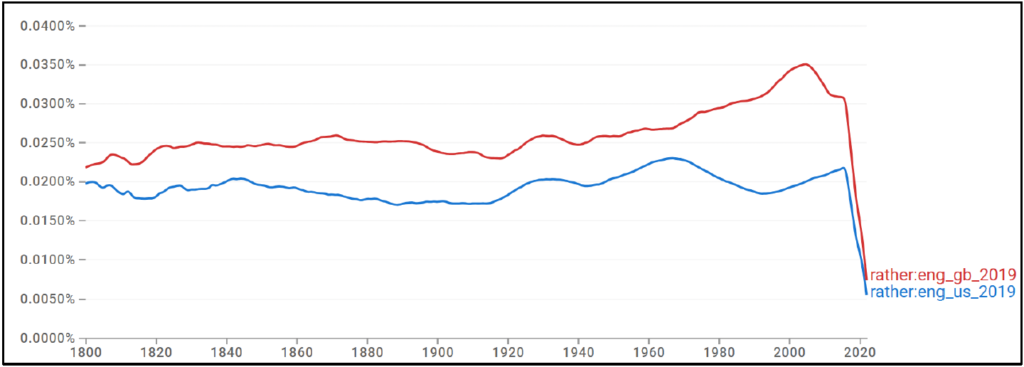
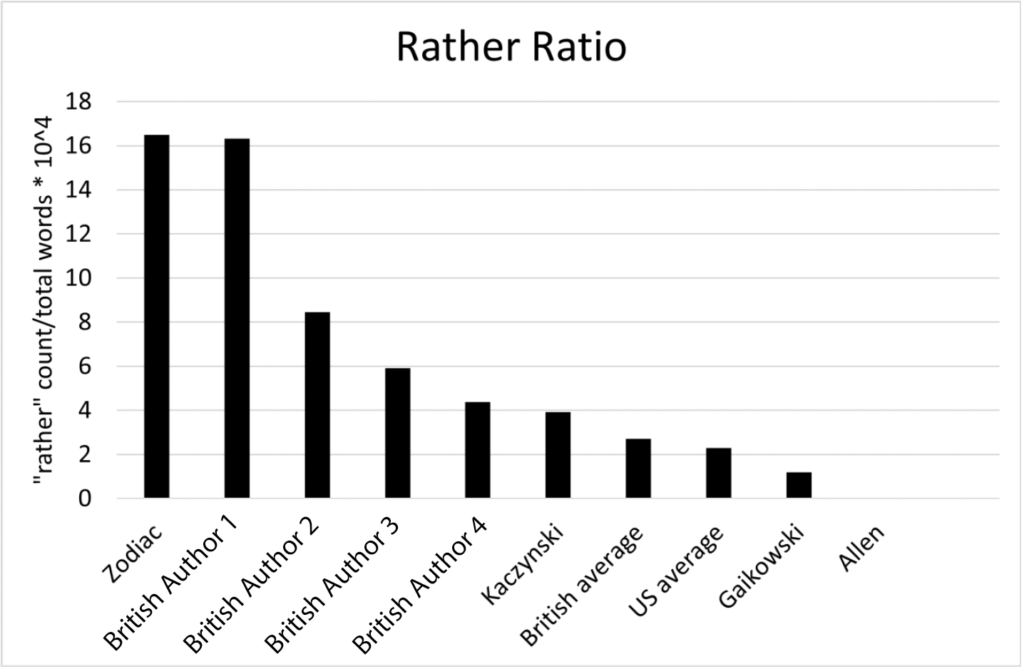
The Mikado as Inspiration
Many suggest that the Zodiac was heavily inspired by The Mikado, so we analyzed the ‘Little List’ song from The Mikado written by the Zodiac and The Mikado script from the Gilbert and Sullivan Archives.

The results show that certain features, such as the omissible ‘in’ before a gerund, a possessive gerund, and the conjoining phrases involving ‘as’ or ‘to’ do appear in The Mikado, but the conjoining phrases appear very infrequently and a high rate of contractions is present, making this British opera the unlikely source of those linguistic features present in the Zodiac’s writing. In the Zodiac’s version of the song, I’ve Got a Little List, the contraction rate is also higher than his previous communications, contracting terms at a rate of 42.9%, and possessing none of the other linguistic parameters.
Conclusion
Given that a quick corpus analysis using COCA and BNC reflects the same data found in the Zodiac suspect corpus (that three out of the four parameters are more British than American) the evidence strongly suggests British English influence in the structural grammar of the Zodiac letters, patterns which would be difficult to fake consistently by mimicking a British persona. Coupled with additional Britishisms such as ‘Happy Christmas’, more subtle British-preferred n-grams like ‘car drivers’, and the frequent use of ‘rather’ as a degree adverb, it is likely that the individual who authored the Zodiac letters was either British or spent a significant portion of his formative and academic years in the UK. Especially considering The Mikado did not reflect a high degree of similarity to some of the more British linguistic aspects including the use of the conjoining phrase ‘as to’ and a low contraction rate, further increasing the likelihood the Zodiac was British.

